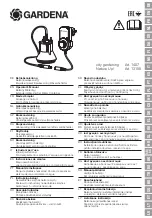
148
11.1 Sampling Overview
To understand the sampling and sampling modes of the oscilloscope, you need to understand the sampling principle,
aliasing, oscilloscope bandwidth and sampling rate, oscilloscope rise time, required oscilloscope bandwidth, and
the influence of memory depth on the sampling rate.
Sampling principle
According to the Nyquist sampling principle, for a bandwidth-limited signal with the maximum frequency f
MAX
, the
equidistant sampling frequency f
S
must be twice as large as the maximum frequency f
MAX
, so that a unique signal
can be reconstructed without aliasing.
f
MAX
=
f
S
2
= Nyquist frequency (f
N
) = alias frequency
Aliasing
Aliasing occurs when the signal is under sampled (f
S
<2f
MAX
). Aliasing is signal distortion caused by incorrectly
reconstructing low frequencies from a small number of sampling points.
Figure 11-1 Aliasing
Oscilloscope bandwidth and sampling rate
The oscilloscope bandwidth usually refers to the lowest frequency at which the input signal sine wave is attenuated
by 3dB (-30% amplitude error).
For oscilloscope bandwidth, according to the sampling principle, the required sampling rate is f
S
=2f
BW
. However,
this principle assumes that there is no frequency component exceeding f
MAX
(f
BW
in this case) and requires a system
with ideal brick-wall frequency response.
Summary of Contents for ATO1000 Series
Page 1: ......
Page 2: ...Version Info Version Date Remarks V1 0 2020 06 ...
Page 52: ...Chapter 3 Automotive Test 49 Figure 3 30 Electronic fuel pump test ...
Page 71: ...68 Figure 3 49 K line test ...
Page 79: ...76 Figure 3 57 Mazda 6 Cylinder internal pressure measurement ...
















































